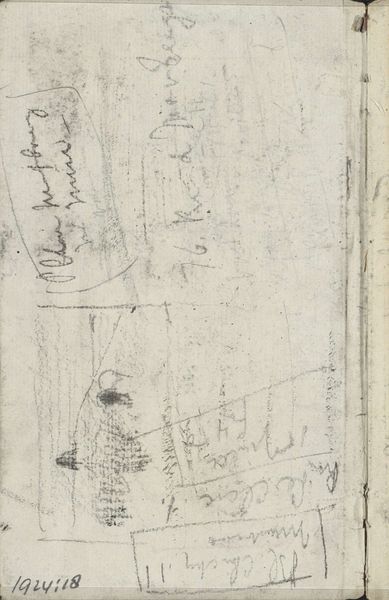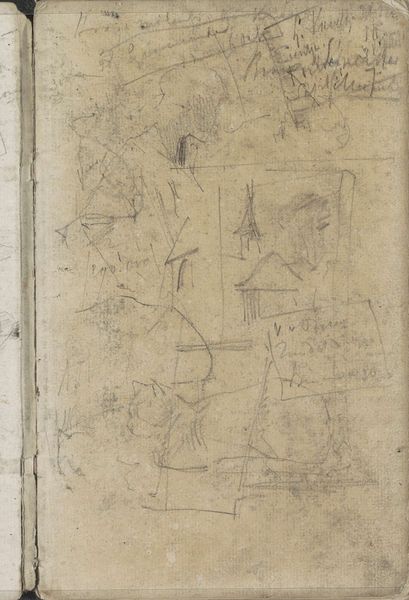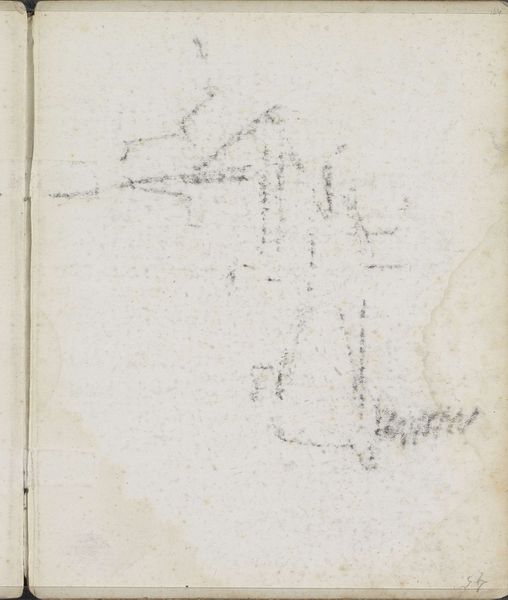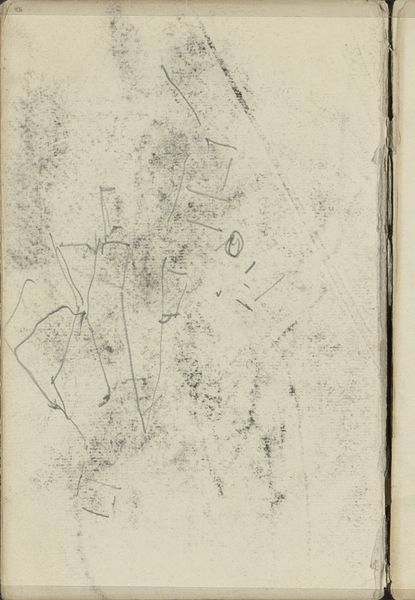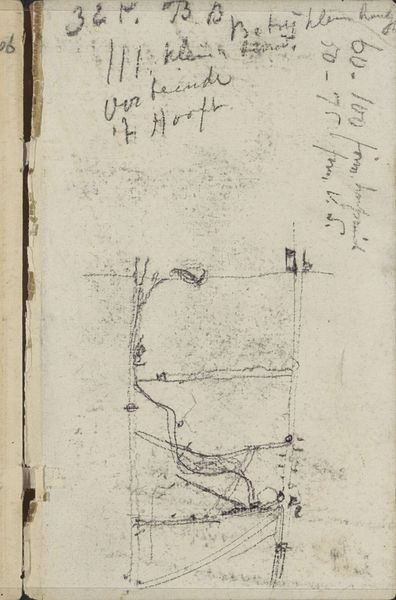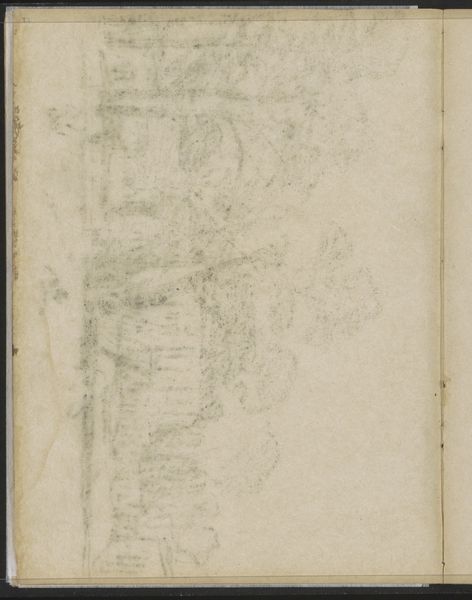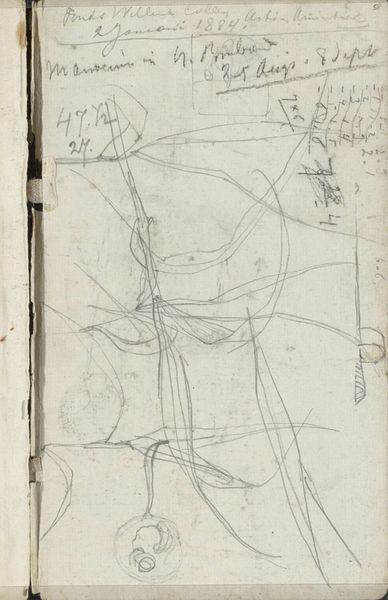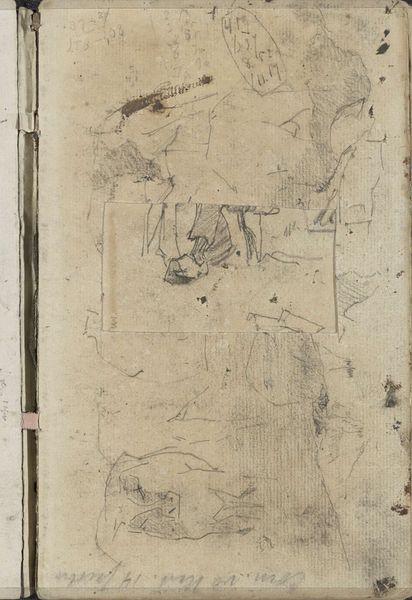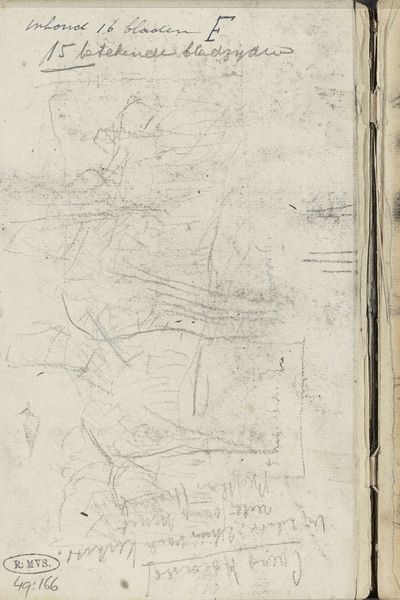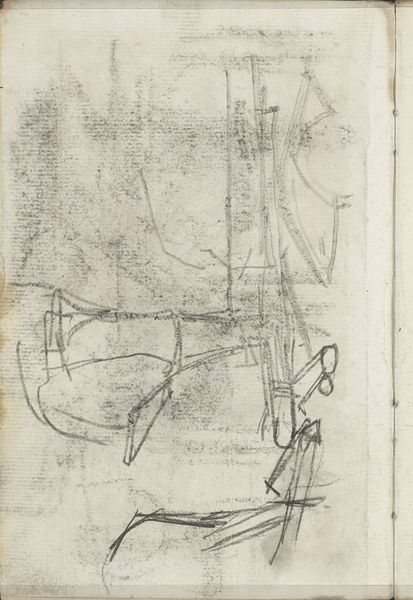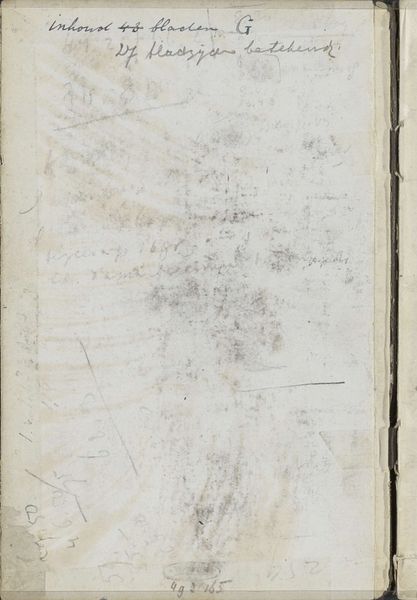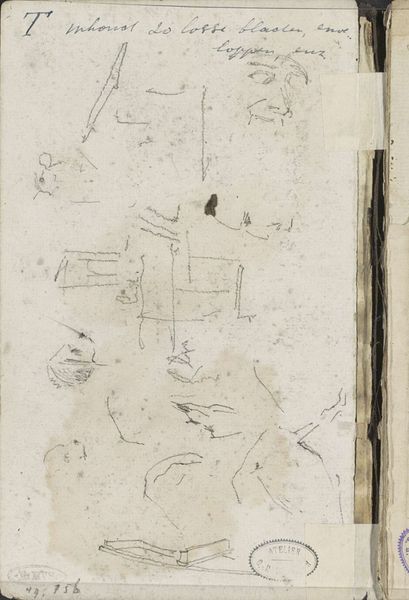
Compositiestudie van een figuur in een landschap Possibly 1881 - 1885
0:00
0:00
georgehendrikbreitner
Rijksmuseum
drawing, paper, graphite
#
drawing
#
impressionism
#
landscape
#
figuration
#
paper
#
graphite
Copyright: Rijks Museum: Open Domain
Editor: So, this is George Hendrik Breitner's "Composition Study of a Figure in a Landscape," likely from between 1881 and 1885. It's a graphite drawing on paper. I'm struck by its raw, almost ephemeral quality. It feels very much like a fleeting thought captured on paper. What do you see in this piece? Curator: The ephemeral quality you mention is precisely where its power lies. It reads almost like a palimpsest, layers of meaning building upon each other. Look closely at the figure; does it strike you as anonymous or specific? Editor: Hmm, anonymous, I think. The lines are so vague, it's hard to discern any details. Curator: Precisely. And in that anonymity, the figure becomes almost archetypal. Breitner was deeply interested in capturing modern life, and he does it here, not through precise portraiture, but through this abstracted form situated within a landscape. Think of the landscape itself; it serves almost like a stage for the human condition. The vagueness invites the viewer to project their own narrative. Are you getting any specific impressions? Editor: That's interesting. It does feel like I'm supposed to see something of myself in that figure. It also evokes a sense of loneliness to me, an isolated figure in a vast space. The quick lines, the sketchy nature of it, lends itself to a feeling of immediacy, that loneliness being experienced right now. Curator: And that brings up an important element: Breitner, although working during a period that leaned towards idealized beauty, often focused on scenes from everyday life, including prostitutes or women working class tasks. In essence, through its ambiguous figure, the artist uses that character’s relation with the landscape to question conventional ideas about class identity, inviting a dialogue around the themes that his other work explicitly engages. What is your perspective now? Editor: That gives it a new weight. Knowing that he focused on everyday figures makes me question the story the landscape tells with the figure. I see it more as a social commentary on being lost and alone, now. Curator: Exactly. These sketches carry more weight than we thought, didn't they? Editor: Absolutely, seeing it this way shifts the whole experience.
Comments
No comments
Be the first to comment and join the conversation on the ultimate creative platform.
